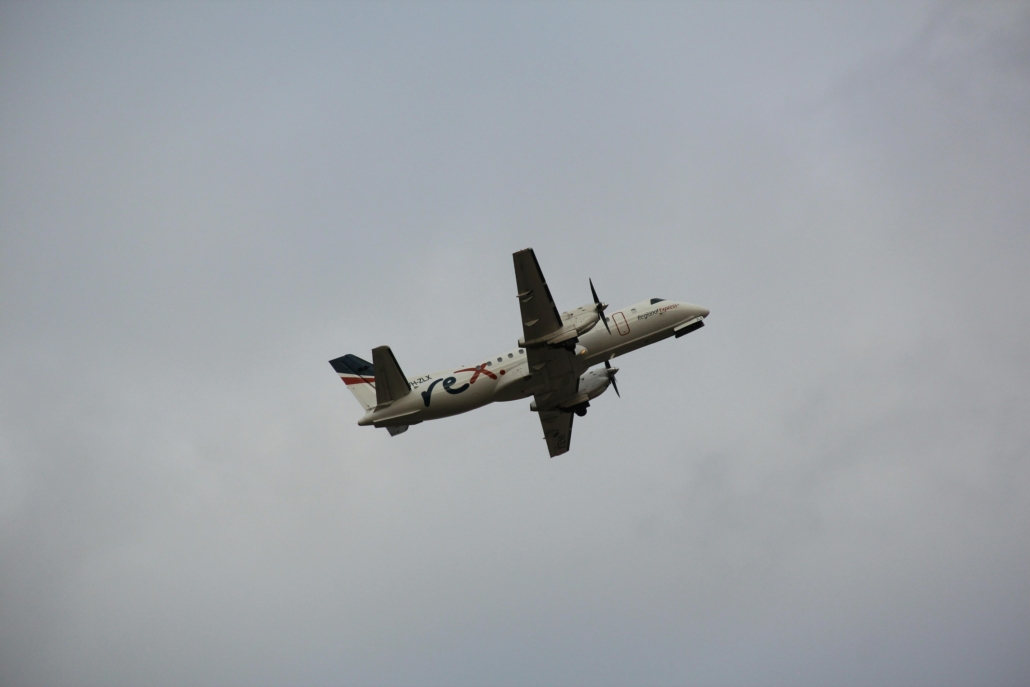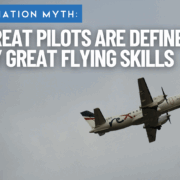The biggest myth in aviation? That great pilots are defined by great flying skills.
|
Getting your Trinity Audio player ready...
|
Editor’s note: This is the first contribution to Flight Training Central from James Onieal, an ATP-certified pilot, instructor, and veteran of Part 91, 135, and 121 operations. With type ratings in the King Air 350, Citation Sovereign, and Embraer 170/190, James brings a wealth of real-world experience to every cockpit—and every article. His writing, like his flying, is focused not just on the technical side of aviation, but on the human side as well. In this story, he reflects on a powerful early lesson about communication, leadership, and the moments that shape us as pilots. James was also a guest on the Pilot’s Discretion Podcast. We’re thrilled to welcome him to the series.
The truth is, most of the tough stuff you’ll face as a professional pilot won’t involve stick-and-rudder skills or technical knowledge. It’s the people stuff that trips you up. Aviation does a great job teaching us how to run checklists, master the regs, and stick landings in ugly crosswinds, but when it comes to communication and handling conflict in fast-moving situations? We’re not nearly as good. And the reality is, it’s way easier to miscommunicate than get it right.
My first turbine job was flying the Saab 340 as a regional First Officer. I crushed training—100% on the indoc test, 94% on systems, cut a full sim session, and passed my checkride with ease. I left training feeling sharp in the airplane, but totally unaware of how unprepared I was for the interpersonal side of the job.

My first turbine job was flying the Saab 340 as a regional First Officer.
About six months later, I flew a nighttime leg from Washington Dulles to White Plains, New York, with the same Check Airman who had done my checkride in the sim and Operating Experience (OE) in the airplane. It was his leg, a route he’d flown a thousand times before. He was the kind of Captain you wanted to fly with: sharp, kind, calm, and made hand-flying look easy. You’d think the autopilot was on until you looked at the panel. He was so smooth you could see him adjust pressure on the yoke just to compensate for the flight attendants walking the aisle. The guy was a rock star.
About 75 minutes into the flight, 20 miles west of the airport, ATC called:
“Do you have the field in sight?”
Without hesitation, the Captain said, “Call it and ask for the Visual 34.”
I did.
“Cleared for the Visual 34, number one,” ATC replied.
As we approached the airport, I started getting uncomfortable. From my seat, it looked like we’d be rolling out on final somewhere between one and two miles from the threshold at around 500 to 600 feet AGL. It was way too tight and too low to be maneuvering a 27,000-pound turboprop with 30 people on board at night. It didn’t make sense—this Captain wasn’t reckless. It felt off.
I didn’t say what I should have:
“Widen out. We’re too tight, too low. We’re going to be unstable.”
Instead, I hedged:
“Do you think we’re gonna be tight?”
I backed off and asked a vague question instead of giving clear feedback. There was still time to make the safer call, but I didn’t push. We started our turn to final about 1.5 miles out. It was pitch black, no moon, just the airport lights and the strobes of a regional jet holding short.
About 30 degrees into our 90-degree turn, I realized we were in trouble. The turn was late, the tailwind was stronger than expected, and we were clearly going to overshoot final.
And just like before, I chose comfort over confrontation:
“Do you think we should go around?”
What I should’ve said was:
“Go around.”
But I froze.
This was the Captain who had signed off my OE. He had 3,000 or 4,000 more hours than I did. He wasn’t a risk taker. He didn’t make bad decisions. So who was I to challenge him?
As the turn tightened, our descent rate hit 900 feet per minute. The bank angle kept increasing, then the GPWS shouted: “Bank angle!” We were rolling too far, too low, too fast. I looked outside. We were correcting back toward the runway but were far right of centerline and uncomfortably close to the RJ holding short.
We were unstable. The bank angle was all over the place. The nose was pointed 30 degrees off runway heading. And the Captain was working the yoke and rudder hard, trying to salvage the approach.
My stress spiked. I went into full fight-or-flight. I couldn’t find the right words. Everything was moving too fast. The only thing I managed to get out was:
“Please go around.”
Not a call. Not a command. Just a quiet request, at the exact moment that Captain needed a confident FO to back him up.
He replied, “It’s okay, I got it.”
At that point, all I could do was grip both armrests and brace. We touched down side-loaded on the far right edge of the runway. The nose was still 20 degrees off runway heading. One prop came within feet of the runway edge lights. The aircraft swerved hard as the Captain wrestled it back under control.
As we taxied clear, he laughed.
“Come on, it wasn’t that bad, was it?”
I didn’t answer. I was still buzzing with adrenaline, so I buried myself in the checklist and after-landing flow.
We parked at the gate and shut down. I stepped out to start the walkaround, mostly just to cool down. As I rounded the tail, there he was. Waiting. Pale as a ghost.
His first words were:
“What I did was not okay. I should’ve listened to you. I don’t know why I didn’t.”
Then he said something I’ll never forget:
“You were right to call for the go-around. I was wrong to continue. Don’t ever hold back just because a Captain doesn’t listen.”
He called me twice more during the hour-long drive home that night, both times just to apologize.

You can be human and still be a great leader.
That flight taught me two of the most valuable lessons of my career:
1. We’re all humans first, pilots second.
It doesn’t matter how many hours you’ve logged or how many times you’ve flown that approach—we’re all still human. And humans make mistakes. We were both human that night.
As we debriefed later, things made more sense. He’d been up since 5:30 a.m. caring for his sick daughter. He’d tried to nap but didn’t sleep well. He felt fine during the first leg and the turn in the terminal. But by the time we were setting up for the approach, fatigue had crept in, and neither of us caught it. His judgment was impaired. He wasn’t processing how bad things were getting and thought he could recover it because he’d done it so many times before.
2. You can be human and still be a great leader.
Both of us messed up that night. But the way he handled it afterward—that’s what taught me what real leadership looks like.
Great leaders aren’t perfect.
They admit when they’re wrong.
They don’t disappear when things go sideways.
They keep the conversation going.
And they turn their mistakes into lessons for others.
So, the next time you’re training a student, mentoring a pilot, or in an interview and someone asks, “Tell me about a time you showed great leadership,” don’t rush to share the story where you look like a flawless hero. Your most powerful stories come from the moments where you were human, when you made a mistake, owned it, learned from it, and helped others grow because of it.
Don’t let the pursuit of perfection get in the way of real connection.
Learn more at RavenCareers.com.


Great story, thanks for sharing.
Made me feel like i was right there with you, experiencing the same emotions!